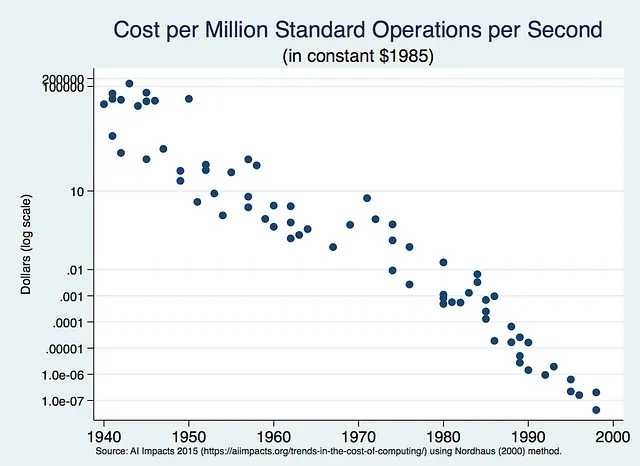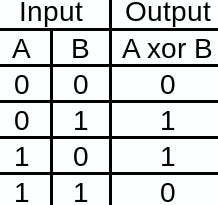Cloud computing has become an indispensable tool in the IT industry. The ability to offload heavy computation is especially useful as the world transitions from Personal Computers to smartphones and tablets. And to top this off, the cost of cloud computing has seen a dramatic drop over the years. Services such as DigitalOcean now allow a user to spin up a server for as less as $5/month.

So how do we ensure that the results sent back by a server are valid? Well… One simple solution to this would be to recompute the results locally and verify that the result is valid. But as you’ve probably guessed, this defeats the purpose of offloading computation. So what we’re looking for, is a protocol where verification of computation is inexpensive in comparison to actually running the computation. This is what Verifiable Computation is all about.
Solution?
Well there’s good news and bad news. The bad news is that the solution isn’t really straightforward and can get pretty mathematical. But the good news is, all of this is extremely cool and definitely worth your time. So I’ve decided to break this article down into several parts. In this one, we will go through a rough overview on how the process works and pick up on more details in the upcoming parts.
Overview of the solution
A typical problem in this domain can be split into three steps.
Let’s walk through a rather simplified example which we will later extend.
The first task at hand is to rewrite the following program in a way that is easier to represent mathematically. Cryptography mainly deals with transformation on numbers and having a ASCII text file with code doesn’t really give us much to work with. We therefore attempt to encode the execution of this function in a way that is easier to work with. There are several ways one can go about doing this, from boolean / arithmetic circuits to constraint systems. We’ll be covering this in future articles so it’s completely alright if you treat them as buzz words for now.
Just to recall, the XOR gate has a high output when both the inputs differ from each other. That is, A != B . The following is the truth table of the XOR gate.



However, this is rather impractical. For any program with decent complexity, the size of the certificate is going to be extremely large. In addition to this, the Verifier has to basically rerun the program to ensure that every variable in the certificate has the right value.
Therefore, we further encode this circuit into a polynomial.
Now I’m sure you are wondering “Since when is converting a function to a polynomial a good idea? ” But bear with me. Polynomials have quite a few useful properties that we’d like to make use of (more on this later).
And how do we encode a function to a polynomial? Consider the following function.

Take a few minutes here. Refer to the circuit diagram that we drew earlier and see as to why the three conditions must be satisfied.
Any function L constructed using an invalid assignment, will lead to a non zero polynomial . So what we’ve effectively done is converted the problem of “Checking if a program was executed correctly “ to “Check if a polynomial is a zero polynomial”.
So far in this article, we’ve seen a very general outline of the steps involved in any VC (Verifiable Computation) protocol. The last few years have seen a number of different protocols that are both secure and practical (somewhat).
These protocols can be divided into two categories;
- Proof based protocols
- Argument based protocols
Proof based protocols are interactive in nature (require multiple rounds of back and forth communication between prover and verifier for a verifier to be convinced about the validity of a proof). A “proof” is stringent in terms of completeness of the protocol. They assume a powerful super-polynomial prover and therefore the protocols tend to be impractical for real world use cases.
Argument based protocols could be both interactive and non-interactive (zero rounds of back and forth communication. Prover provides a “certificate” after running the computation and this “certificate” is able to convince any verifier without requiring any communication with the prover). An “argument” refers to a less-stringent definition of a proof which assumes that the prover to be in polynomial time at best.
We’ll focus the upcoming parts on a subset of Argument based protocols which are able to construct SNARK proofs which stands for “Succinct Non-Interactive Argument of Knowledge ”. Let’s break this down
Succinct Proofs which are succinct allow verifiers to verify in a couple of milliseconds. That is, the size of the proof “certificate” is a few hundred bytes even for a verification of a function with millions of instructions.
Non-Interactive As discussed earlier, non-interactive proofs do not require back and forth communication between prover and verifier. Once the “certificate” is generated by the prover, any verifier can verify if the prover has honestly run the computation
Argument of Knowledge SNARKs are argument based proofs. Argument based proofs are efficient (we’ll see more of this in the later parts)
There are several protocols which are able to generate SNARK proofs. From the next article, we’ll discuss one of these in detail along with an example.
Conclusion That’s all for now! I’ll be uploading the second part of this series soon enough. Stay tuned for the next article if you found this one useful. Thank you for reading!